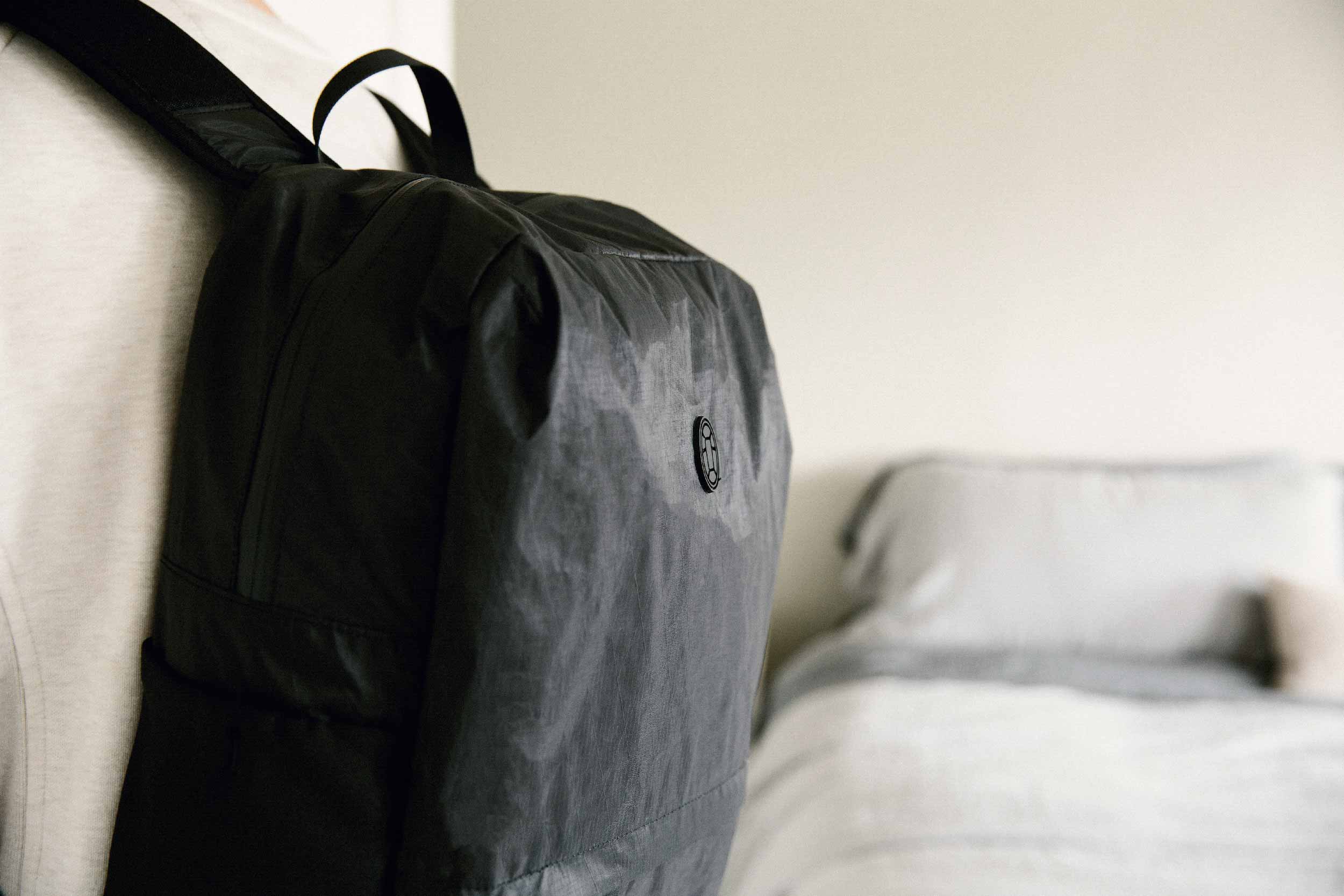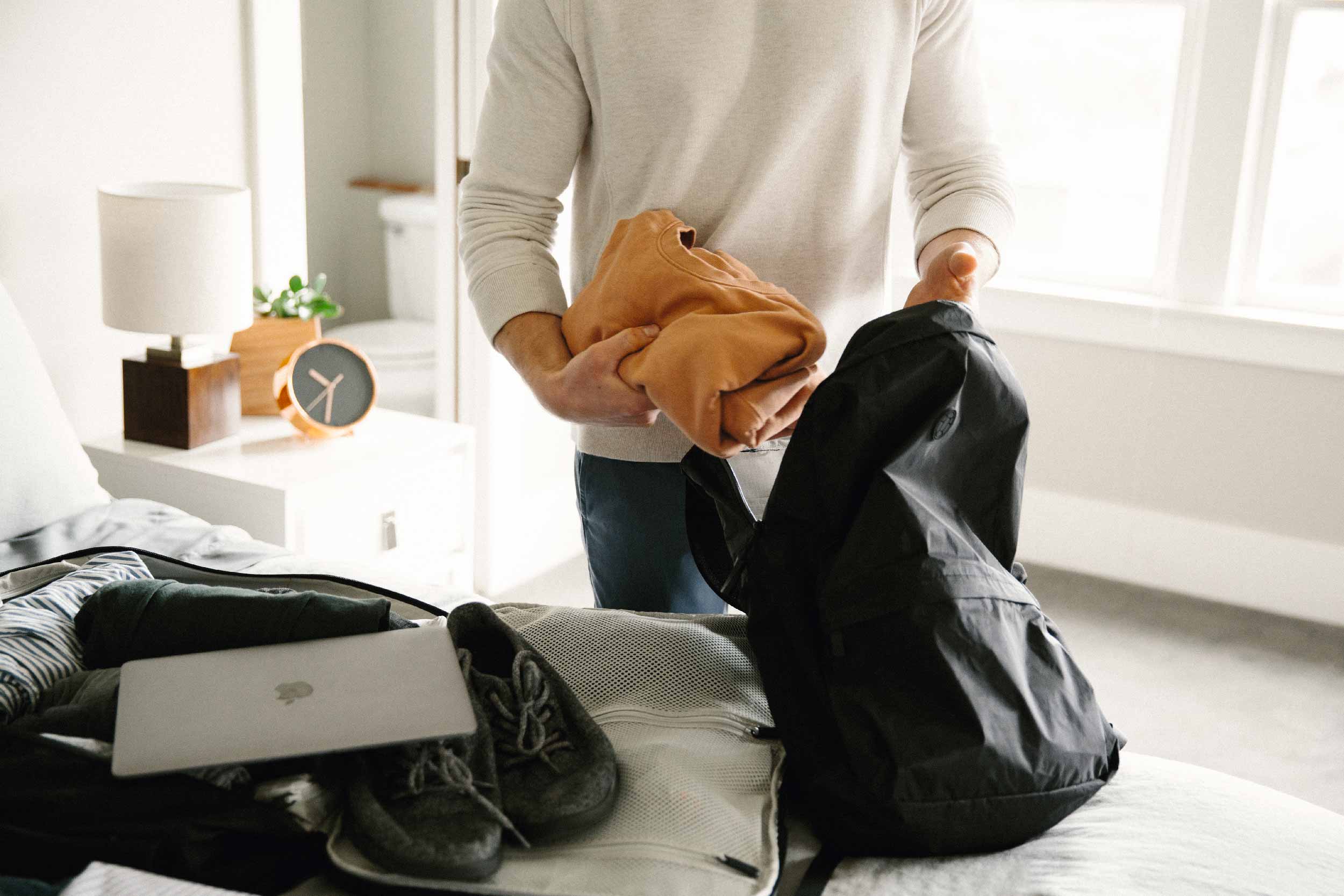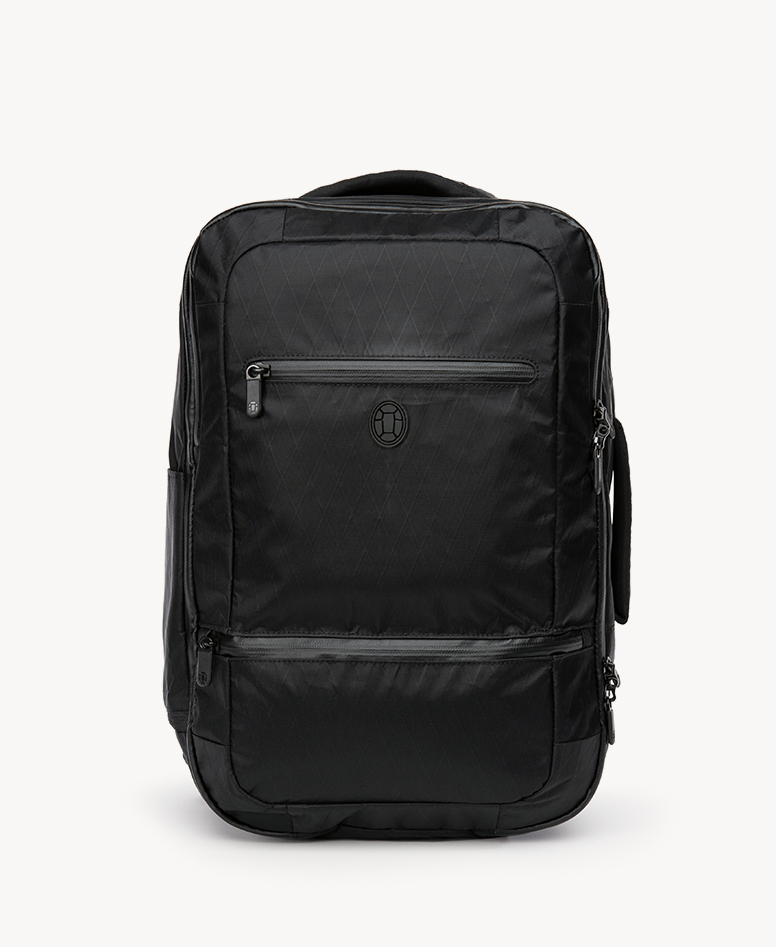Table of Contents
Airlines allow you to bring one carry on and one personal item in the cabin with you when flying.
Most airline publish strict size and weight requirements for your carry on. But not for your personal item.
Airlines’ rules for personal items are not nearly as clear as their rules for carry on luggage. Some airlines don’t publish any rules at all for personal items. The airlines that do have rules don’t have a standard size of personal item that they allow. Even within North America, the sizes can vary by 3-5″ in each dimension depending on which airline you’re flying.
Without clear and consistent explicit rules, travelers abuse the implicit rules.
We’re here to help you maximize your packing while still traveling light and being a good fellow traveler. In this article, we’ll clarify:
- What you can bring on a plane as a personal item
- How big your personal item can be
We’ll cover what’s generally acceptable since rules vary.
What is a Personal Item?
Let’s start with some definitions.
A personal item is not checked luggage. Checked luggage goes in the cargo hold of the plane.
You’ll bring your personal item onto the plane with you. A personal item is a type of carry on—or cabin—luggage but is not your official “carry on bag.”
A carry on bag is your larger, primary bag, which you’ll stow in the overhead bin.
A personal item is a smaller, secondary bag, which you’ll stow under the seat in front of you.
The TSA does not publish a definition for personal items. Personal item requirements are up to the airlines.
While every airline has a different list of acceptable bags, the intention is the same. Here are example personal items from a handful of airlines:
- Air Asia: “[O]ne (1) piece of laptop bag, handbag, backpack or any other small bag which must not exceed 40cm x 30cm x 10cm. This item must be able to fit under the seat in front of you.”
- American Airlines: “Your personal item like a purse or small handbag must fit under the seat in front of you. Dimensions should not exceed 18 x 14 x 8 inches (45 x 35 x 20 cm).”
- Delta: “[O]ne personal item free of charge, such as a purse or laptop bag or item of similar size”
- Lufthansa: “Another small item of baggage (max. x=30 cm y=40 cm z=10 cm, e.g. handbag, laptop bag).”
The guiding principle is that a personal item should be a small bag like a laptop bag, purse, or handbag. A backpack, camera bag, or tote will also work. Do not attempt to put a suitcase, regardless of its size, under the seat in front of you.
For your personal item, think bag, not luggage.
What Else Can You Carry On the Plane?
Most airlines will allow certain small items in addition to your carry on and personal item. For example, you can usually bring:
- Coat, jacket, or hat
- Umbrella
- Pillow or blanket
- Book or newspaper
- Food or drinks purchased after clearing security
- FAA-approved safety seat, stroller, and diaper bag for lap or ticketed child
- Medical or mobility devices for passengers such as wheelchairs, walkers, canes, crutches, braces, portable oxygen concentrators, and CPAP machines
- Duty-free merchandise
- A foot rug for use during prayer
- Pet carrier
In most cases, the above items do not count as a carry on or as a personal item.

Personal Item Sizes
The sizes of personal items allowed on your flight vary even more than the rules for the type of bag allowed.
The rule of thumb is: your personal item should fit under the seat in front of you.
The personal item allowance is not an excuse to bring a second carry on bag.
I’ve seen people do this and take up two spots in the overhead bin. Don’t be a jerk. Share the overhead bin space with your fellow travelers. The bin is for larger, carry on luggage. You’re allowed to bring a second bag, but that bag must go under the seat in front of you. Don’t steal someone else’s bin space just because you want a second bag without sacrificing your own legroom.
The “under the seat” guideline seems simple enough. But, how much space is under that seat? As a tall person with big feet, the space feels pretty small to me.
Not all airlines provide size guidelines for personal items. The ones that do all have different rules.
Carry on luggage rules can vary but are far more consistent. In the US, most airlines allow carry ons up to 45 linear inches (22 x 14 x 9″). International airlines, especially those in Europe, allow carry ons up to 55 x 35 x 20 cm.
Unfortunately, no such consensus exists for the size of personal items.
Using the same airlines as we did above, we can see that Air Asia and Lufthansa allow personal items up to 40 x 30 x 10 cm. American Airlines, however, allows underseat luggage all the way up to 45 x 35 x 20 cm. That’s a 5-10 cm difference in each dimension. American allows a personal item of double the depth of the other two airlines. You’re allowed a personal item on American Airlines that’s 2.5x the size of your personal item on Air Asia or Lufthansa.
Major airlines in North America, including Aeromexico, Alaska, and Delta don’t publish personal item size requirements. Neither do most airlines in Asia.
The rules, when they even exist, are wildly inconsistent. Our Personal Item Size Cheat Sheet includes measurements for most airlines, but always check your airline’s guidance before flying.
As with carry on luggage, the more discreet your personal item is, the less likely it is to draw the attention of a gate agent or flight attendant. Keep it small, slim, and inconspicuous.
Personal Items in Basic Economy
Between 2012 and 2018, most major airlines in America added a basic economy class. Basic economy fares are cheaper than normal economy fares but come with a few added restrictions.
Most importantly, on a basic economy ticket, you are only allowed a personal item, not a carry on. You can only carry one bag, which must fit under the seat in front of you. You cannot put anything in the overhead bin.
If you’re flying basic economy, your personal item goes from being your secondary bag to your only bag.
A basic economy ticket can be a great way to save money, especially on shorter trips where you won’t need as much luggage. A last-minute weekend trip is the perfect time to choose basic economy, save a few bucks, and travel with just one or two changes of clothes plus your toiletries.

Does a Backpack Count as a Personal Item?
Yes, a backpack counts as a personal item.
A backpack makes for a great personal item, because it’s small and on your back. When paired with a suitcase or duffel bag as your carry on, a small backpack is discreet and unlikely to be called out by a gate agent. Since size allowances vary so much by airlines, you aren’t likely to find a bag that’s both useful and compliant with every airline. Instead, choose a bag that’s low profile and will fit under the seat in front of you. As long as you aren’t egregiously flouting the rules, you shouldn’t run into any problems.
If you want to carry a backpack as a personal item, use a daypack or a laptop backpack.
Store your personal item under the seat in front of you or on top of your carry on in the overhead bin. Do not use a second spot in the overhead compartment. When I carry two smaller bags, I’ll do this to preserve my legroom without using a second spot in the overhead bin.
As always, your best bet is to pack as light as possible. Don’t give your airline a reason to single you out.
The Best Personal Item Backpacks
When shopping for a personal item backpack, consider two questions:
- Is it small enough to fit under the seat in front of you?
- Will you be carrying a laptop?
The first question will rule out hiking bags and travel backpacks that can be used for carry ons but are too big to use as personal items.
The second question will help you decide which type of personal item backpack you need.
If your personal item will be your main bag for carrying your laptop—alongside a duffel bag or suitcase as your carry on—choose a laptop backpack that can fit your chargers, cables, and other hardware as well as protect your computer.
If you don’t usually carry a laptop, or will be carrying your laptop in your carry on, a daypack is a better choice. Choose one that’s small and lightweight so that you can wear it around all day at your destination.

Outbreaker Laptop Backpack
Maximize your comfort and organization with the Outbreaker Laptop Backpack. You’ll have plenty of pockets for peripherals, plush shoulder straps, and premium weather resistance in a more structured bag.

Outbreaker Daypack
Travel ultralight with the Outbreaker Daypack. When you arrive at your destination, carry the daypack for any day of adventure: from sightseeing to working remotely from a cafe. You can fit all of your inflight and day-to-day essentials in the daypack. When you don’t need a second bag, pack it flat inside your carry on.
The short answer is yes, a backpack is a personal item. The caveat is that it must be the right backpack. A small backpack that fits under the seat in front of you.
The airlines’ personal item rules vary so much that it’s impossible to follow them without owning multiple bags or buying one so small that it’s useless to carry.
Instead, follow the spirit of the rules by carrying a small bag as your personal item and avoid drawing attention to your luggage.
Ten articles before and after
Types of Backpacks – JUNYUAN Bags
How To Pack A Carry-On For One Bag Travel? – JUNYUAN Bags
How To Wash A Backpack? – JUNYUAN Bags
Front-Loading Vs. Top-Loading Backpacks – JUNYUAN Bags
Daypack Vs. Backpack – JUNYUAN Bags
Packing Tips for Traveling with Musical Instruments – JUNYUAN Bags | Professional Bag Manufacturer
Money Belts: Do You Need One? – JUNYUAN Bags | Professional Bag Manufacturer
The Best Mini Bluetooth Speakers for Travel – JUNYUAN Bags | Professional Bag Manufacturer
Waterproof Laptop Backpack craftsman tool bags




 Mobile/What's App/Wechat
Mobile/What's App/Wechat E-Mail
E-Mail ADD
ADD




